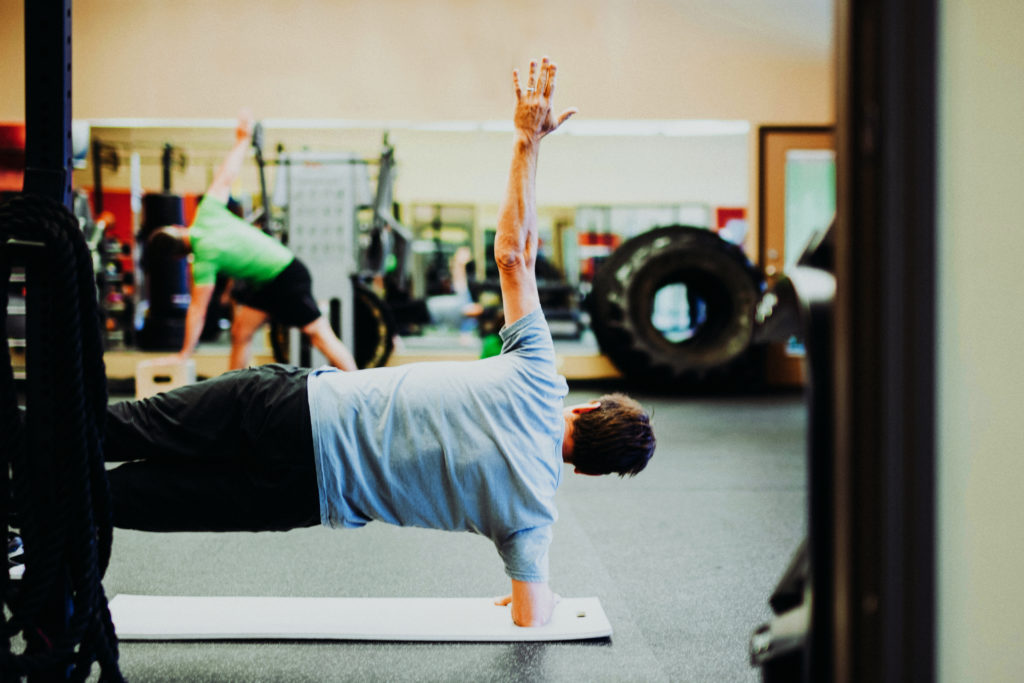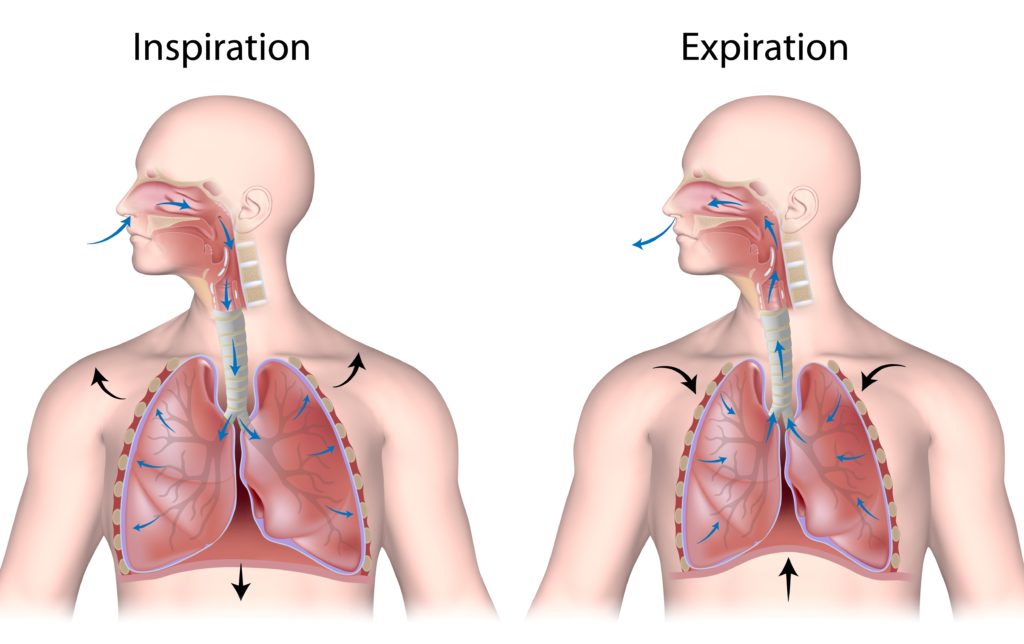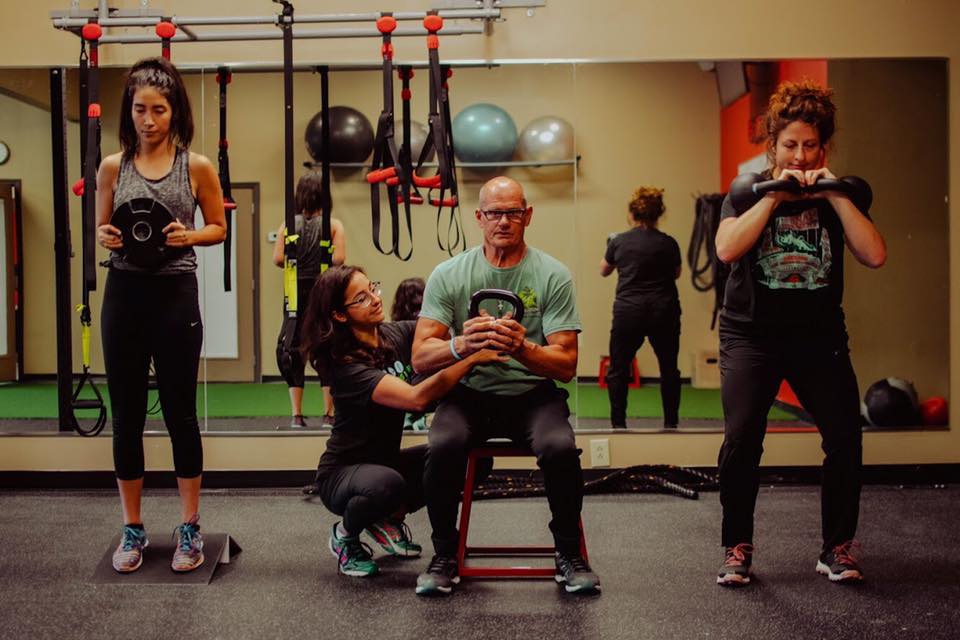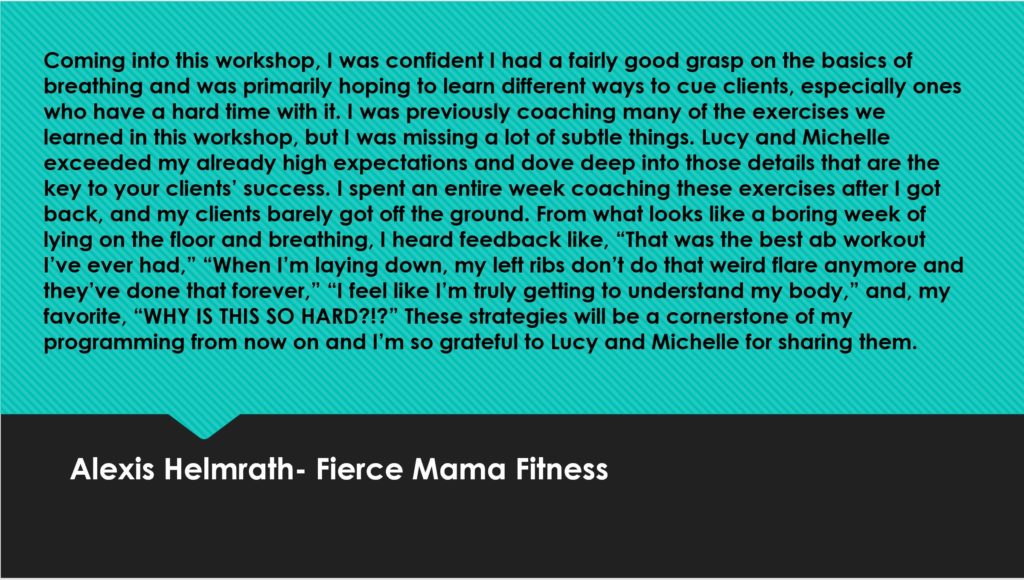I was seeing a psychotherapist last year who guided me through a meditation. During the breathing portion, he cued me to let my belly expand upon inhalation.
After the meditation ended, I asked him why he wanted me to push my belly out. He said pushing the belly out allowed me to breathe with my diaphragm instead of being a shallow chest breather. Better diaphragmatic breathing would tap into my parasympathetic nervous system (rest and digest), and allow me to relax.
Little did my therapist know I’m a breathing fanatic. My life might always seem like it’s falling apart and I don’t know what I’m doing from his perspective, but I got breathing retraining down pat. I ended up educating him like I do many people on what diaphragmatic breathing really is, and what it is not.
Spoiler alert: belly breathing isn’t doing what most people think it’s doing, and people are not really chest breathers.
During respiration, you actually want your abdomen AND chest to expand. Your lungs are in your chest, not in your belly. Your belly already has a bunch of substance in there (organs), let the rib cage take the air.
During normal respiratory mechanics, the ribcage and abdomen should expand a complete 360 degrees to achieve adequate intra-abdominal pressure.
Belly breathing lacks this circumferential expansion, reducing intra-abdominal pressure, which can result in limiting movement options and performance in the gym.
Before we go any further, let’s go over what are normal mechanics of respiration, and what it is not.
THE Zac Cupples made an amazing
If you’re coaching belly breathing, it’s okay to stop.
It’s 100% okay to let your clients know you’ve learned something new and you
When I first got into teaching breathing 8 years ago, I too coached belly breathing. I would put light chains on their bellies and got them to push against as they inhaled. Even though my intentions were always in my client’s best interest, my lack of knowledge led to lackluster breath coaching.
If your intention is to stop your clients from being shallow breathers, tap into their parasympathetic nervous system, teach them how to chill out, and have them become
So as of today: RIP Belly Breathing.
Never again will you coach it.
I will teach you what you CAN start coaching and you will start helping your clients with

Let’s say Zac’s video just went over your head. It’s cool. Breathing is complicated.
Let’s wrap your head around this stuff by showing you the big picture and giving you some actional steps to start getting good at this stuff.
If you want to change someone’s breathing, you have to start looking at the structure
When you’re trying to understand your main breathing muscle, your diaphragm, you must appreciate the position that the ribcage is in. And if there’s something I look at a lot, it starts with R and ends with IBCAGE.

Trying to achieve diaphragmatic breathing by
A door must be closed before it can be opened.

In order for you to take a breath IN with your diaphragm (Inhalation, Inspiration), it needs to come from a state of being OUT (Exhalation, E

I’ve put my hands on hundreds of people’s ribs. Some of the assessment findings stay pretty consistent with each person I look at . Even though everyone seems different from the outside, their thorax’s keep telling me a similar story:
And It’s telling me to tell you “STOP COACHING ME TO BELLY BREATHE, You’re fucking it up!!”

When you assess the rib cage, you can make some assumptions on what phases of respiration people are in and what phases of respiration they struggle getting in. In this post, we’re going to keep things simple.
Because in reality, people can present different breathing limitations all throughout the body. Today’s
Once you have experience coaching the activities I will share below, you’ll be ready to take things deeper. Because it always goes deeper.
To not overcomplicate things, we’re going to say your clients struggle to achieve a position of full exhalation with the diaphragm in a domed position, where the middle is pulled up, like a parachute.

See how it looks like a parachute?
If it can’t dome/exhale, the diaphragm sits flat, in a position of inhalation (inspiration), which can be accompanied with numerous movement limitations, and what most people would consider “poor posture”.
Your muscles that you use to breathe in with are winning, but they’re not even winning a good way, like our President.
Your muscles that help you achieve a state of full exhalation are struggling and are not in
Your clients struggle breathing correctly, just like they struggle with other movements like flexing their shoulder or extending their hips. Fortunately, a little emphasis

I’m very biased, but I think breathing is a movement more coaches should be paying attention to.
If you can’t perform another movement like
With breathing, it’s harder to make those connections, but I guarantee, if your c
You’ll see things like, limited shoulder motions that prevent upper body lifts from looking good, hips can’t extend so they feel everything in their back, ankle won’t bend and their squat looks like shit…you name it.
If you start appreciation breathing, you might start seeing
If you’re interested in how breathing can affect movement, the next video is perfect for you.
If programming constraints are taken away due to the quality of movement your clients can demonstrate, you can get these people STRONG no matter what their background is.
This is Josh. Two years ago Josh couldn’t do much without pain.

Josh can now deadlift over 300lbs and squat over 200lbs and he got there with the help of breath retraining.
Josh’s story repeats itself over and over, not just at Enhancing life, but at gyms all over the place.
Coaches who get deep into breathing, realize that it’s more than just breathing. It’s more than just putting people in 90/90. It’s more than just rehab.

This rabbit hole gets hated on all the time but the ones that get into it, are no longer driven by what other fitness professionals think, they’re more driven by the results their clients are getting.

Like Josh’s results. Josh was doing step ups last week with 100lbs on his back (safety bar), and he
The same Josh that said last year that he thought his knees were one day going to give out on him.
Appreciating breathing is a huge reason why he has progressed so much. Not the only reason of course, but it was definitely a big piece of the puzzle
I’ll help you get started 🙂
Look at the following exercises as activities that put your muscles in a better position to be a better breathing/mover.
The better you breathe, the more degrees of freedom your joints will have. More degrees of freedom means more movement possibilities!

Breathing sequence for all these activities:
- Full b
reath OUT through the mouth - 3-5 second hold at the end of the exhale
- Inhale keeping the front ribs down vs belly breath. The cue of keeping the front ribs down doesn’t mean expansion is not allowed there. By
cuing that, it allows for the expansion to be closer to 360, so you should see some movement in the belly, butcuing it to not expand tends to give you the outcome you want (360 expansion).
Once you have hours of coaching these exercises under your belt, you’ll be able to start digging deeper.
I didnt come up with ANY of this. This is just my interpretation of the things I’ve learned through REALLY smart people.
The two people you need to start following are Zac Cupples and Bill Hartman. If you keep asking yourself Why and How these are the guys that will help you figure out those answers. Invest your money on their courses/intensives.
However, you have to be a decent coach to even take their info and be successful with it.
Good coaching can’t be taught through a webinar or a lecture seminar where they only use one person to demo with.
Lucky for you, Michelle Boland, Michael Mullin, and I have the perfect seminar for you!
The first day 100% HANDS ON coaching.
April 27th & 28th 2019
The Trio: Lucy Hendricks, Dr. Michelle Boland, & Michael Mullin
Day 1: Saturday with Lucy Hendricks & Dr. Michelle Boland, Fundamentally Sound: Coaching & Technical Mastery
Hours: Five Total, 8am-1pm
Day 2: Sunday with Michael Mullin, Circuiting the Rehab Training Model
Hours: Five Total, 8am-2pm, lunch 11:30-12:30pm
What people have said about the hands on portion:

Comments are closed.


Loved this article so so much Lucy, much appreciated. Getting people to buy in to the “weird breathing stuff” can be tough, I’ll definitely be borrowing some of your explanations above when working with clients! Grateful for all the great coaching work with you and Michelle Boland at Zac Cupples’ HM workshop in February. You’ll definitely see me at one of your future seminars!
Your article helped me a lot, thanks for the information. I also like your blog theme, can you tell me how you did it?
Your article helped me a lot, thanks for the information. I also like your blog theme, can you tell me how you did it?
Thanks for sharing. I read many of your blog posts, cool, your blog is very good. https://accounts.binance.com/it/register-person?ref=B4EPR6J0
Can you be more specific about the content of your article? After reading it, I still have some doubts. Hope you can help me. https://accounts.binance.com/en/register-person?ref=T7KCZASX